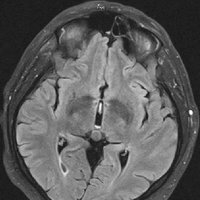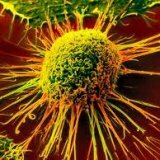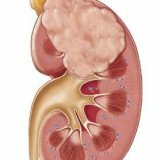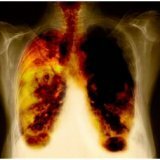Cystic brain tumors

Tumors of the brain according to statistics make up about 2% of all organic diseases of the central nervous system. One case of a brain tumor is registered annually for 15-20 thousand people. And the incidence of women and men is about the same, the incidence of children is somewhat less. The incidence is greatest at the age of 20-50 years. Tumors can be different - benign and malignant. Consider some cystic tumors.
Neuroectodermal cystic tumors
An astrocytoma is a glial tumor formed from astrocytes. It occurs at any age. Among all neuroectodermal tumors, it is considered the most common( 35-40%).Macroscopically, this tumor is grayish pink or yellowish in color and density is often different from brain substance, less often it is denser or softer. The astrocytoma from the substance of the brain is clearly delineated, but in some cases the boundaries of the astrocytoma can not be determined. Inside the tumor, cysts are very often formed, which grow slowly, over the years, and eventually can reach considerable dimensions. Especially the formation of cysts is characteristic of astrocytomas in children. In adults, this tumor occurs more often in the cerebral hemispheres, and in children it develops mainly exclusively in the hemispheres of the cerebellum as limited nodes with cysts. More characteristic for astrocytomas is the expansion-infiltrative growth.
Oligodendroglioma is a tumor that develops already from mature cells of neuro-glia-oligodendrocytes. It is 1-3% of all brain tumors and occurs mainly in adults. The tumor in the white matter of the cerebral hemispheres grows slowly and narrowly, reaches a large size and mainly spreads along the walls of the ventricles, often penetrating into their cavity, and it can also germinate into the cerebral cortex and the cortex. Typical for the oligodendroglioma is a mucosal degeneration, calcification. Macroscopically, the tumor is a compact node of pink color with clear boundaries. In the tissues of the tumor are often visible small cysts, which are filled with thick contents, foci of necrosis, areas of calcification in the form of strata or grains. The growth of oligodendroglioma is expansive-infiltrative.
Ependymoma - this brain tumor develops from the ependyma cells of the ventricles themselves. It occurs at different ages, most often in children and is 1-4% of brain tumors. It reaches ependymoma of large size, and its main mass fills the cavity of the ventricle. In the tumor tissue, cysts and areas of calcification are clearly visible.
Glyoblastoma( multiformn spongioblastoma) is a malignant tumor formed from cells of neuroepithelial spongioblast. It accounts for 10-16% of all intracranial brain tumors. It is often localized in the depths of the cerebral hemispheres and is prone to the formation of cysts. Rarely in children, this tumor affects mainly structures that are located along the midline of the brain.
Cystic vascular cystic tumors
Angioreticulum is a tumor that consists of vascular elements of connective tissue origin. It is 5-7% of the total number of brain tumors. The tumor is benign, grows rather slowly, expansively, rarely - expansively-infiltrative and does not have capsules. Quite often it forms a cyst, which contains a straw-yellow or brown liquid with a rather large amount of protein. Cystic angioretikulema is a small node of gray-pink or gray-red color.
The node is located in the cavity of the cyst under the cerebral cortex, often brazed with the medullary membranes and clearly delimited from the surrounding brain tissue. Basically, the localization of the tumor is the cerebellum, and more rarely the cerebral hemisphere.
Sarcoma - this tumor is formed from connective tissue elements of the brain tissue, as well as its membranes. It is observed in 0,6-1,9% of all cases of brain tumors. Extra-cerebral tumors are more or less outlined nodes that resemble meningiomas externally, but it is often possible to detect areas of ingrown growth of this tumor into brain tissue, sometimes - bone usurition. On a section of such a tumor are visible areas of brown, gray-red or yellowish color with foci of hemorrhages, necrosis, and cysts of various sizes. Tumor growth is infiltrative. Cystic brain tumors are always subject to removal and subsequent treatment.



